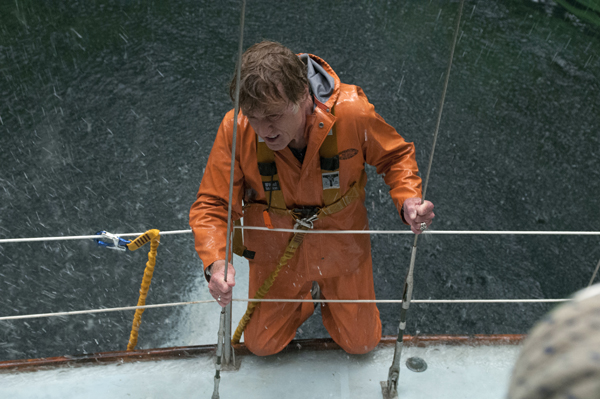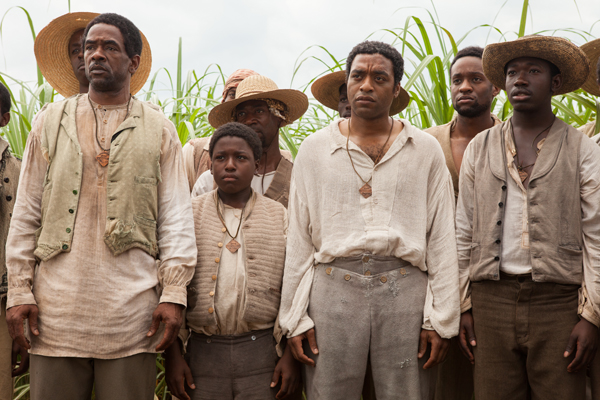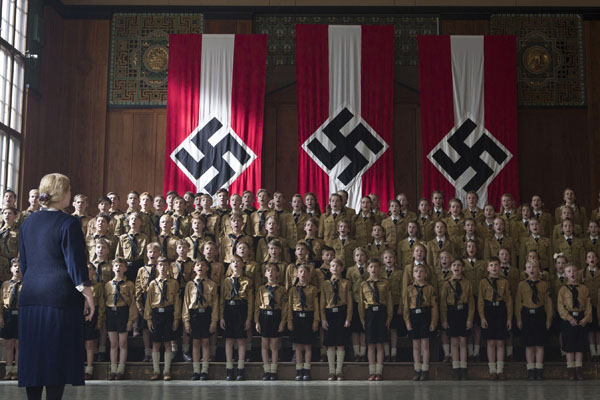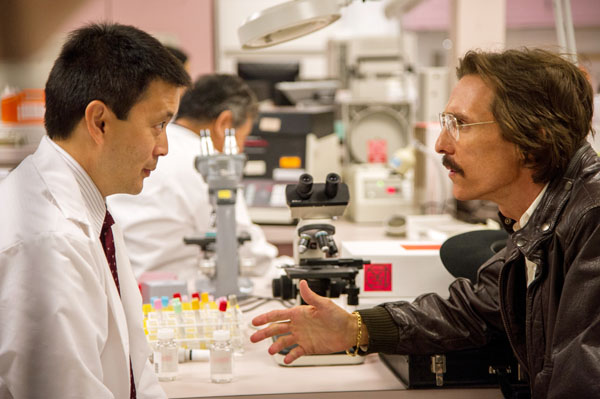Graphic
Crucial images in the top films of 2013
Cinematographers for ‘12 Years a Slave,’ ‘Dallas Buyers Club,’ ‘All Is Lost’ and ‘The Book Thief’ describe how each captured an image meant to connect with the viewer.
By Michael Ordoña, with contributions by Envelope writer James Rocchi
FULL COVERAGE: Oscars 2014 | BUZZMETER: Pundits’ Picks | PHOTOS: Behind the scenes of movie and TV
‘All Is Lost’
Cinematographer: Peter Zuccarini
‘12 Years a Slave’
Cinematographer: Sean Bobbitt
‘The Book Thief’
Cinematographer: Florian Ballhaus
‘Dallas Buyers Club’
Cinematographer: Yves Bélanger
|
(Richard Foreman / Roadside Attractions) |
|
The scene:
A lone sailor is forced to abandon his sinking vessel in the Indian Ocean. Below his small life raft are schools of fish and about 20 circling sharks. |
|
Birth of the shot:
Director J.C. Chandor “made it very clear he wanted to add this development of the food chain. He liked the idea of doing that vertically through the water column: Small things formed right under the raft, slightly bigger fish a little deeper, bigger fish coming to investigate those, and sharks deeper again. He wanted to pull back slowly from that to reveal the tiny raft with all these sharks and things around it, to allow for this three-dimensional drifting reef that the lonely man on the raft had become.” |
|
Making it work:
“We selected a place [in the Bahamas] with lots of sharks. They’re all frenzying around the surface … and then we just drop in … and descend through the surface layer of the sharks. I was connected by hard-wire to J.C. and he would be directing the framing a little bit…. He wanted to slowly retreat so we’d feel the loneliness of the raft. At the start of the shot, there are two or three sharks; by the end, there are like, 20.” |
|
Shot significance:
“This raft is all alone on an undulating sea. The raft takes on water and then underneath sharks are waiting. It’s another one of those ‘What now, God?’ moments.” |
|
(Francois Duhamel / Fox Searchlight) |
|
The scene:
Enslaved Solomon Northup has been strung up on a tree branch, dangling with his toes in the mud, barely keeping himself from hanging. He stays there for hours amid the beauty of nature as the rest of the slaves begin their daily chores around him. |
|
Birth of the shot:
“When we were looking for the locations, it was important [the location] be very strong compositionally … and it was important because we were going to hold those shots for a long time. The geographic relationship between the big house, the hanging tree, the slave huts — they all had to be exactly right to have the impact we were looking for.” |
|
Making it work:
“If you hold just a single frame or a single composition for a very long period of time, then the audience is drawn into it; they start projecting their own ideas into it, they become invested in it, they become intrigued by it … and in a situation like [Solomon’s] being hanged, it becomes more and more uncomfortable. We’re projecting ourselves onto him, and into what he is going through … we start to viscerally feel it ourselves.” |
|
Shot significance:
“From the time I first read the script, that was the most important scene visually in the film because that encapsulates the true horror of slavery: This man is owned by someone else. No one can touch him because he belongs to someone else. It’s just such a powerful image.” |
|
(Jules Heath / 20th Century Fox) |
|
The scene:
A young girl, Liesel, is sent to a new town in World War II Germany and finally blends in with her new classmates when the school choir sings — in uniform, under Nazi banners. |
|
Birth of the shot:
“We felt very strongly that, with an innocent story like that, you have to experience it through her eyes … So that was a pivotal moment, in a sense, because it’s the first time she’s feeling part of a group. She’s accepted. She’s been an outsider; she’s been in a fight. A few months later, she’s happily there, as part of the Nazi youth, singing that song, not understanding at all what the implications are.” |
|
Making it work:
“The challenge was to make it horrible and beautiful all at once, that you could find that sun-drenched beautiful moment and understand this clearly was awful. Starting as close on her as we can, then pulling back to realize she’s become part of the group. It goes to this perfect wide shot where everyone is singing along perfectly and no one’s out of tune, no one’s out of step and everyone’s just signed on for the same thing. Technically it wasn’t so difficult; we were on a Technocrane, and we just pulled back and used every last inch of that school hall to get the widest possible shot, to get them all. Then we break it, instantly, because this is not a Nazi propaganda movie.” [laughs] |
|
Shot significance:
“In a way, this was a preview of the bigger dilemma of the film. It shows a girl who’s happily immersed in a group and doesn’t understand yet what the group is. So to capture that in one shot — to see it through her eyes — then we jump forward to the repercussions. That’s what makes the movie worth doing, to go from the innocence of not understanding to fully understanding what’s going on and deciding against it.” |
|
(Anne Marie Fox / Focus Features) |
|
The scene:
HIV-positive Ron Woodroof goes to Mexico desperate to find any treatments beyond what the Food and Drug Administration has approved. He discovers one promising drug based on research with butterflies and enters the butterfly holding area. |
|
Birth of the shot:
“It was in the script. I think the first version wasn’t butterflies, it was something else, but I can’t be sure.” |
|
Making it work:
“I like to work with the light existing. Our director added some little lights above the door. He wanted the first [overhead] light to be flickering, so we had someone working with the breakers during the take to make it go on and off. I think we had maybe 20 butterflies in the room; the rest is CGI [computer-generated imagery]. It took about half an hour in there. Matthew [McConaughey] was right in the mood; that was it. All the butterflies were reacting to the light. Each butterfly has a personality; some moved onto Matthew, some moved elsewhere. He had no problems. Maybe only 10 went on Matthew. It was pure luck. We did nothing” to draw them to him. |
|
Shot significance:
“Technically, they need the butterflies for the research. But also, Matthew [as the dying Woodroof] is connected with life. He’s really celebrating life.” |








